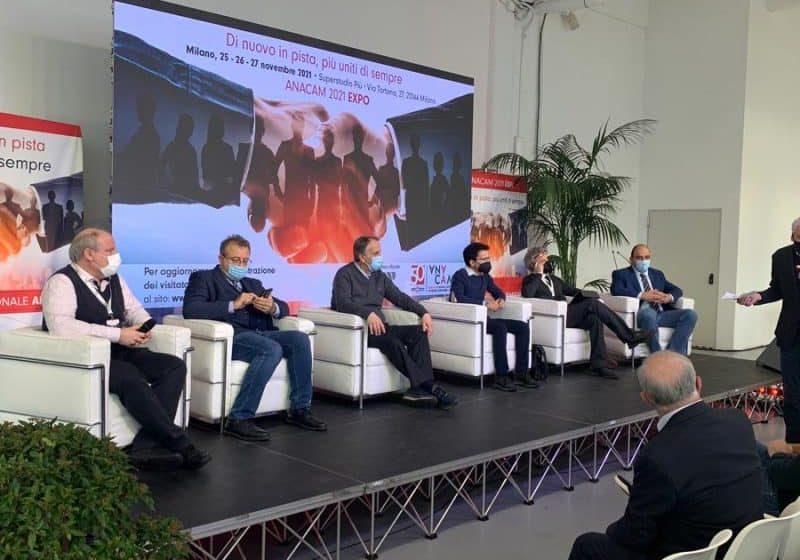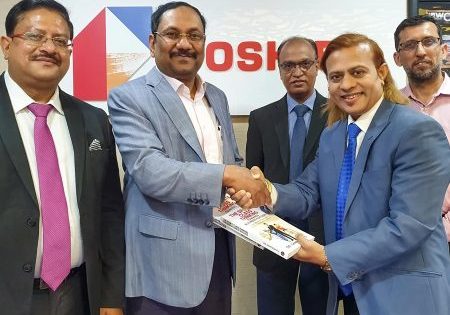Unlocking Africa’s R&D
Dec 1, 2021

African VT companies’ efforts to succeed in a crowded export market
R&D among Africa-based vertical-transportation (VT) manufacturers and suppliers lacks access to capital and adequate government support and has a limited share of the export market, thus relying heavily on imports to meet market demand. A large share of the African VT market is currently in the hands of international elevator firms that already have well-established R&D operations in their countries of origin, with little drive to establish additional research sites in emerging markets, including Africa.
But for indigenous African VT companies, the underdeveloped R&D levels mean small- and medium-sized elevator suppliers in the continent are denied the opportunity to stay ahead of their VT market and effectively compete for a share from the sale of new elevator/lift products and services.
VT producers and suppliers in emerging markets may have offloaded the pressure to improve and innovate to foreign competitors, many of which have signed distribution agreements for the supply of their imported VT products across the continent. This is largely due to lack of adequate capital for research on new product and service ideas, and subsequent commercialization of them. “The large investments required for R&D activities to support expansion, and have new products and services, are not typically available for new VT manufacturing companies in emerging markets,” says Ian Blackman, CEO of Nairobi-based Elevator Concepts Ltd. (ECL). “Actually, currently there is no significant manufacturing capacity for indigenous VT companies in Africa,” he adds.
This makes Africa an import-oriented elevator market with minimal export capacity, allowing some of the global VT market players, such as those from China, to dominate sales and services activities on the continent.
Blackman cites Chinese firms targeting emerging markets with a focus on VT products that are largely 1000-kg machine-room-less units that travel up to 2.0 m/s, with 20 stops, hence enabling them to cover around 80% of emerging market requirements.
Any VT market product requirements outside of this Chinese range are met by larger or more specialized manufacturers that have already invested heavily in R&D to ensure fast and effective innovation and adaptation in response to their global clientele. Most of the international VT companies active in the African market, many of which are from Europe and Asia, have onsite R&D facilities in the proximity of their manufacturing facilities.
A large share of the modern technology and industry solutions useful in sustaining Africa’s elevator and escalator market is being promoted by foreign VT firms that dominate the continent’s market, either directly or through local distribution partners. Moreover, Blackman says when it comes to the concept of materials R&D, the idea is “to develop new technologies, which often leads to products that are more expensive than the technologies they are replacing.”
He says, “While this is an essential element of product development, higher prices are not normally appropriate for the price-sensitive emerging markets.” With the African market’s rapid expansion and maturity, “the traditional VT technologies and solutions are often no longer appropriate.” He adds:
“More recent technological innovations, such as connectivity with the Internet of Things (IoT), building access systems, remote monitoring and control, destination-based dispatch and energy efficiency, focus in the continent is shifting to client specifications requirements across Africa.”
He cited the example of ECL, which, despite its recent entry into the East Africa VT equipment market, decided to scout for “a suitable manufacturer to partner with who could offer these leading-edge technologies at competitive market rates.”
ECL recently signed an exclusive agent agreement with Nidec Elevator, a Japanese-American subsidiary of the Japan-based manufacturer and distributor of electric motors, Nidec Corp. This was, according to Blackman, “largely due to them having recently made significant investments in R&D and being able to cover all the technical requirements of all the African projects we are targeting.” Nidec Elevator, through its in-house R&D, has managed to develop its capacity to manufacture and supply custom-built equipment that complies with various African market requirements and national codes.
Like many emerging markets, Africa’s VT market has a base international code, such as EN 81, although across the region’s market, local fire codes and elevator function requirements are in place, as well.
According to Markus Mannig, head of Export Sales at German firm Meiller Aufzugtüren GmbH, which focuses on the development of elevator doors “based on more than 60 years of experience in the German and later European markets,” many lift companies in developing markets rely on well-established industry practices based on previous, and most likely foreign, R&D solutions.
Mannig says from the perspective of Meiller Aufzugtüren GmbH, which has previously supplied its elevator doors for heavy-duty lifts at the Kusile power station in South Africa and goods lifts at the Sandton Convention Centre also in South Africa, the role of R&D in emerging markets such as Africa is minimal.
Mannig, who was among the participants at the 2019 Global Lift & Escalator Expo in South Africa, told ELEVATOR WORLD in an email response, “These markets have already adopted certain international standards based on previous R&D outcomes by global lift industry players and hence most local lifts companies can only operate using such standards as in the case for building codes and energy regulations.”
For a market like Africa, Manning says the maintenance and repair component is hardly influenced by any new R&D since for most local elevator companies, “it is just a question of looking for a new elevator component that is to be replaced based on the original one.” This could be slightly different if a lift company is researching the latest service delivery methods in maintenance and repair services to gain a competitive edge.
Speaking on the general R&D trends in the lift industry, Mannig says elevator companies should be the ones to invest in R&D and not governments, which should only be confined to providing a conducive environment that allows the market players to invest in the activity. He says:
“I do not think that it is a good idea that governments invest directly in R&D of lift industry products. I think this will even hinder any progress, because governments, if allowed to invest in R&D, are likely to influence market trends.”
However, he says governments should take the lead in ensuring “lift safety for users and those engaged in maintenance and repairs.” He also says governments should push for development of a regulatory framework that “corresponds with the latest industry developments and findings, such as in energy consumption.”
Most of the international VT companies active in the African market, many of which are from Europe and Asia, have onsite R&D facilities in the proximity of their manufacturing facilities.
Going forward, African lift companies could grow their market share by borrowing a leaf from medium international VT players that are seeking to make a foray into the continent and have prioritized R&D.
For example, Italian designer and producer of lifts, elevators, residential lifts, escalators, dumbwaiter and stair lifts, Millepiani Elevators, says it considers “research and development activity as a key asset because it is what drives the ability to innovate and propose new solutions.” The company says on its website it “has invested and continues to invest heavily in research and development and in training, activities that have been allocated a share of profits accrued over the past years.”
Millepani says it is committed to financing R&D “not only as a mere budget obligation, but as a key investment to ensure manufacturers gain a market edge both in the local and international markets.” Company management has focused on frequent and scheduled updating of its training program especially for the firm’s own consultants, “to demonstrate a high level of competence and reliability across markets.”
“For us, R&D is a core activity that enables the company to design innovative products and solutions particularly for the home lifts and elevators market segment,” the website says. Millepani says because of its in-house R&D activity, “We are able to provide our clients with the necessary tools to ease their work and also develop a profile of the installed equipment ranging from escalators to stair lifts through regular monitoring.”
Blackman adds:
“In general, most of the new innovations in the elevator industry evolve from the major VT transportation manufacturers and suppliers and, hence, their focus on the developing African markets is key in driving the development of more focused solutions that are suitable for various VT markets across the continent.”
As in many emerging markets, Africa’s R&D activity is driven largely by the region’s VT market size and local political stability.
Blackman states that because of the VT industry’s long-term return on investment, considerable funding is needed in the beginning stages of establishing a local presence. Those investments will then be returned through a successful maintenance and repair business. He adds that existing building codes and energy regulations have a bearing on the utilization of R&D activity even in markets where R&D is still in its infancy because “new building codes and energy regulations are at the core of any new product development, which should include future functions and features.” He says:
“Elevator manufacturers are constantly on the lookout for changes in building and energy codes to not only ensure that their new products are fully compliant, but also to be in a position of presenting their solutions as the optimum product that meets these changes, thereby providing a marketing edge over the competition.”
The maintenance and repair segment of the VT market, which is typically the most profitable sector of the industry, has also benefited from R&D investments for small, medium and large service providers, “for example, the development of new, ‘smart’ elevators that are IoT-ready and interface directly over 5G networks.”
“As 5G networks roll out across Africa, these new control systems would communicate status and other information directly to maintenance centers, transforming maintenance processes from periodic (typically monthly visits) to just-in-time,” he adds.
Blackman predicts elevators in the near future will be calling for maintenance based on key utilization factors, largely preventing failures and no longer depending on relatively inefficient periodic maintenance.
Although the 55 African VT markets vary considerably, “Many are still developing fundamental national issues and the resources available for technical R&D are often limited,” Blackman says. Therefore, they follow R&D outcomes from the private sector, he observes. It is, however, vital that any national government takes a keen interest in current and future VT developments, so they can ensure that the local codes and standards remain relevant to all technological advances, explains Blackman.
In East Africa, the Kenya Bureau of Standards (KEBS) Technical Committee on Lifts and Escalators recently adapted some European Norms from the EN 81 series, with a view to maintaining safety and relevance within the regional VT industry.
“This involved a considerable amount of work within the KEBS structure, but the resulting Kenyan Standards do not differ greatly from the original European Norms, so a considerable amount of time was therefore saved in not re-inventing the wheel,” said Blackman, who is the KEBS Technical Committee chairman.
For the drive by Africa-based VT enterprises toward a larger slice of the global lifts and escalators market to succeed, companies would have to invest in R&D even as they fine-tune processes that can give them a competitive edge, such as market development and new business practices.
Get more of Elevator World. Sign up for our free e-newsletter.









